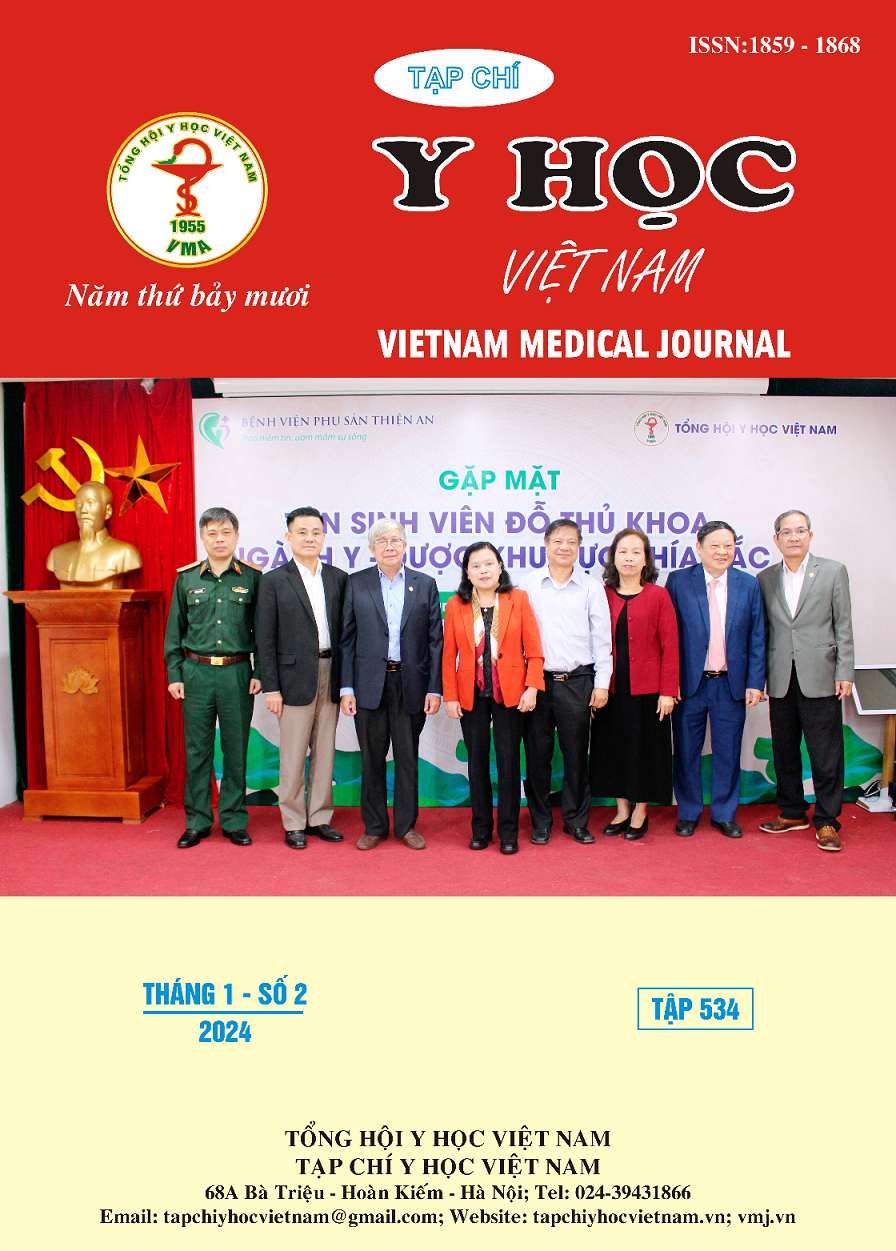CHOOSING THE METHOD OF RECONSTRUCTION AFTER LAPAROSCOPIC DISTAL GASTRECTOMY: ASSESSMENT OF QUALITY OF LIFE
Main Article Content
Abstract
Introduction: Reconstruction after laparoscopic distal gastrectomy (LDG) was still controversial. In our center, LDG has been applied frequently since 2013. This retrospective study was conducted to evaluate the effectiveness of the 5 types of reconstruction after distal gastrectomy in terms of functional outcomes. Patients and methods: We retrospectively studied 426 patients with gastric adenocarcinoma, who underwent LDG from 2017 to 2020 in our center, followed by 5 types of reconstruction: Billroth 1 (B-I), Billroth 2 delta shape (BII-ds), Billroth 2 with Braun anastomosis (B-II Braun), Billroth 2 with hinged afferent loop (B-II-h) and Roux-en-Y (R-Y). Short-term outcomes included operative characteristics and complications. Long-term outcomes included 1-year endoscopic findings according to the LA and the RGB classification. Results: B-II Braun or R-Y had a longer operating time than other methods (p < 0.001). There was no difference in blood loss, postoperative hospital stay, conversion rate to open surgery, rate and severity of complications. R-Y reconstruction was ideal in maintaining serum albumin (p < 0.001), however, there was no difference in terms of weight and hemoglobin maintenance. Endoscopic results after 1 year did not differ in the rates of reflux esophagitis and gastric remnant gastritis between reconstructions. B-I reconstruction had a high rate of food residue (grade 1-2: 11.7%, grade 3: 5.9%, grade 4: 2.9%). R-Y reconstruction had the lowest rate of bile reflux (4.8%), followed by B-II Braun (14.2%) and B-I, B-II-h, B-II-ds. Conclusion: Roux-en-Y reconstruction had a longer operating time but provided favorable nutritional results and reduced the incidence of bile reflux. B-I reconstruction resulted in a high rate of food residue. B-II with hinge afferent loop was simple in technique and provided favorable functional and nutritional outcomes.
Article Details
References
2. Hoya Y, Mitsumori N, Yanaga K. The advantages and disadvantages of a Roux-en-Y reconstruction after a distal gastrectomy for gastric cancer. Surg Today. 2009;39(8):647–51.
3. Kim KH, Park DJ, Park YS, Ahn SH, Park DJ, Kim HH. Actual 5-year nutritional outcomes of patients with gastric cancer. J Gastric Cancer. 2017;17(2):99–109.
4. Imamura T, Komatsu S, Ichikawa D, Kosuga T, Kubota T, Okamoto K, et al. Reconstruction method as an independent risk factor for postoperative bone mineral density loss in gastric cancer. J Gastroenterol Hepatol. 2018;33(2):418–25.
5. Okuno K, Nakagawa M, Kojima K, Kanemoto E, Gokita K, Tanioka T, et al. Long-term functional outcomes of Roux-en-Y versus Billroth I reconstructions after laparoscopic distal gastrectomy for gastric cancer: a propensity-score matching analysis. Surg. 2018;32(11):4465–71. http://dx.doi.org/10.1007/s00464-018-6192-2
6. Adachi Y, Suematsu T, Shiraishi N, Katsuta T, Morimoto, Kitano S, et al. Quality of life after laparoscopy-assisted Billroth I gastrectomy. Ann Surg. 1999;229(1):49–54.
7. Komatsu S, Ichikawa D, Kubota T, Okamoto K, Shiozaki A, Fujiwara H, et al. Clinical outcomes and quality of life according to types of reconstruction following laparoscopy-assisted distal gastrectomy for gastric cancer. Surg Laparosc Endosc Percutaneous Tech. 2015;25(1): 69–73.
8. Võ Duy L, Nguyễn Hoàng B, Đỗ Đình C. Đánh giá kết quả phẫu thuật nội soi điều trị ung thư dạ dày. Y học Thành phố Hồ Chí Minh. 2016;20(2): 112–6.


